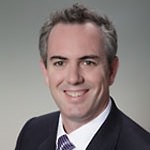There are various ways to think about objectives-based investing. Individuals form objectives. They may work with a financial adviser to map out their goals and quantify how much those goals will cost, working backwards from there to design an investment programme.
How managers meet objectives
Managers of defined benefit pension funds invest to meet the objectives of a scheme that contains many members. The scheme defines the future benefits paid out to the members based on rules that are explicitly defined. At any point in time a scheme has a ‘funded status’ which is the ratio of the assets in the pool divided by the present value of the future benefit payments.
Managers of annuity products invest in ways that meet the obligations made in issuing those products. The statutory fund from which annuities are issued also has a funded status. Regulators of life insurance companies require the marking to market of liabilities at the onerous risk-free rate.
Growth equities managers invest to achieve a return objective defined by their product disclosure statement.
The range of investors listed above represents a spectrum. Some pay no attention to the client or member’s objectives. They merely seek to grow wealth as a component of an overall objectives-based regime.
Others seek to specifically match the asset pool performance with the fluctuations of the liabilities over time as the investor or scheme becomes fully funded. Over time these investors shift their mix of assets from growth assets into liability hedging assets. These are the hard core liability-driven investors. They optimise their portfolio differently than traditional asset-only portfolio constructors. They optimise to funded status and funded status volatility, rather than to asset return and asset price volatility (return and risk).
Others such as the annuity product providers seek to provide a middle ground via approaches such as income layering, where a layer of income is built on top of the age pension. These and others, such as financial advisers, suggest to their clients this middle ground approach via defining objectives not so much in terms of explicitly measured liabilities and liability drivers, but rather in terms of an income objective in retirement.
Panel discussion
At our recent SuperRatings Lonsec Day of Confrontation industry conference, we hosted a panel on objectives-based investing. The key question posed to the panel was whether it represented the future or the past.

Troy Rieck, Executive Officer, Investment Strategy at Equip Super
Troy Rieck oversees about $8 billion of funds under management in both Defined Benefit and Defined Contribution, and therefore he intimately understands the need to manage assets with respect to liabilities or objectives.
Rieck is strongly in favour of objectives-based investing, arguing that fiduciaries should prioritise clients or member’s objectives when making investment decisions.
He is constantly trying to strike an appropriate balance for members in terms of risk, fees and return across life stages to deliver financial adequacy in retirement. Central to his considerations are member segmentation and recognising that risk changes during members’ lifetimes.
He also questions whether the industry has sufficiently defined what it is trying to achieve, has a fundamental aversion to peer comparisons over short time periods, and strongly believes that a one dimensional focus on fees rather than net returns is sub-optimal.
Interestingly, Rieck mentioned to me prior to the session that his DB Scheme is fully funded at the Asset Return type discount rate of about 7%. On that measure, his Scheme is well over 100% funded. His challenge is to manage the assets so they deliver a high return and offset the risks and factors that drive the liability value such as inflation and interest rate risk.

Richard Howes, Chief Executive, Life at Challenger
Richard Howes manages the Challenger Life business and the design, specification and implementation of their annuity products. He believes objectives-based investing is hugely relevant and will continue to be so.
He also recognises a spectrum of approaches from long horizon wealth accumulation to investing to precisely match objectives. In managing his annuity products he has to abide by capital rules. That is, his business needs to provide enough risk capital to ensure payment of these obligations even under highly stressed market conditions. He is obligated to mark to market his liabilities using a risk free discount rate and to hold additional capital to cater for 1-in-200-year shocks for risk.
Richard likes to think about individual investors as “life companies of one” in that individuals have liabilities in terms of the spending they need and want to do. He notes the importance of financial advisers in this process in helping individuals to define goals and design solutions.
Howes views his firm’s products as part of an income layering approach, which is something of a middle ground between the two extremes of using an outcomes-based approach and merely investing for long-term wealth creation via return maximisation. A layer of lifetime guaranteed income in the form of an annuity forms income which together with any entitlement to the Age Pension enables a retiree to be comfortable that their needs will be met. The account based pension forms the third layer which is about meeting wants or more aspirational retirement spending objectives.
His team invests statutory fund assets in a highly diversified portfolio comprising predominantly fixed income (to deliver return and hedge against interest rate risk) and also commercial property and infrastructure (to deliver return to the portfolio and hedge against inflation risk). To the extent that there are residual risks such as credit or property risk, shareholder’s capital is held to cover that.
Howes’ believes it’s all about security and peace of mind. The more a client, member or individual wants peace of mind, the more they should secure this via an objectives-based approach.
He cautions against thinking about assets in terms of buckets. While buckets can protect against selling growth assets during periods of market stress, prolonged stress periods can result in imprudent allocations to risk assets. Richard asserts that you would not want to be at age 78 with all money in equities because the low-risk buckets have run out.

Roger Montgomery, CIO and Founder of Montgomery Investment Management
Roger Montgomery is an equities manager who believes in growth at a reasonable price. He seeks to buy stakes in ‘wonderful businesses’ to maximise their long-term investment returns. He is passionate about client outcomes, preferring to focus on returns rather than levels of funds under management.
I invited him onto the panel because every objective-based process needs a growth component to both progress investors towards being fully funded and to offset longevity risk.
Roger is concerned that components of objectives-based investing expressed elements of a fad. In particular, he expressed concern that the stock market cannot be relied upon to deliver everyone’s ideal outcome. As a growth investor, he said his goal is to always maximise returns by buying stakes in great businesses at good prices, and that is the most valid approach to equity investing over the long term.
He also asserted that the industry should stop focusing on fee levels and instead highlight net returns. He argued strongly that, to deliver great investment returns, fund managers should employ and retain high-quality investment talent. In other words, you get what you pay for.

Wade Matterson, Practice Leader, Australia at Milliman
Milliman is a large global actuarial consulting firm. Matterson believes objectives-based investing is crucial and that, as an industry, we need to think about product returns not in relation to an asset class benchmark, but in relation to an individual’s bespoke objectives. That is, compare their asset return to the movement in the value of their liabilities.
His firm assists those holding growth assets to manage downside risk by providing overlay products. These utilise futures to either set a volatility target or to replicate the payoff profile of a put option at the design of either the client or of a managed risk product.
He passionately believes that the way forward for the retirement industry is to work toward meeting the challenge of utilising technology and investment skill to manage portfolios bespokely for individuals based on their unique liability profiles.
True believers
From Lonsec’s perspective, we believe in objectives-based investing. Investors can take two approaches. Firstly, working with an adviser, they may want to define their objectives in terms of an income in retirement and a program of drawing down on accumulated assets to meet their retirement spending aspirations. The annuity provider may be of some assistance in this approach.
Secondly, to more precisely manage their outcomes, they could try to define both the present value of their liabilities and the factors which drive this present value. In that regard interest rates, inflation and currency movements may be factors to consider. Over time as these investors become fully funded, they gradually shift their assets from growth assets into hedging assets, which change in value in line with changes to the value of their future liabilities (objectives). They may hold some residual growth assets to offset longevity risk. Their growth assets may be managed with a low volatility target or in a risk-managed fashion.
The key challenge for the industry is to shift the mindset from ‘how good is this investment product and will it meet its stated objective’, toward the eventual holy grail of evaluating a product with respect to ‘how will this product perform in relation to various individual investors’ bespoke objectives’?
In a pension scheme, the actuary assists the scheme manager to assess the value of the objectives (liabilities) and how well-funded the scheme is. An asset consultant might advise how to structure the portfolio to optimise the asset performance with respect to those liabilities and recommend gradual shifts in growth versus hedging splits over time.
The challenge for a research house servicing retail advisers and investors is how to develop tools to help both of these groups in an individual context. We believe that objectives-based investing is definitely the way of the future, not merely a fad.
Matt Olsen is the Chief Executive Officer of Lonsec Research.